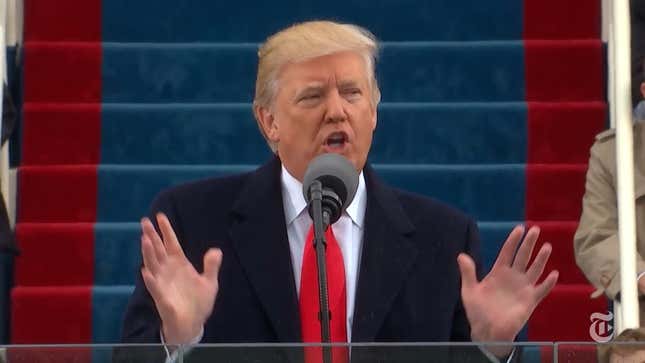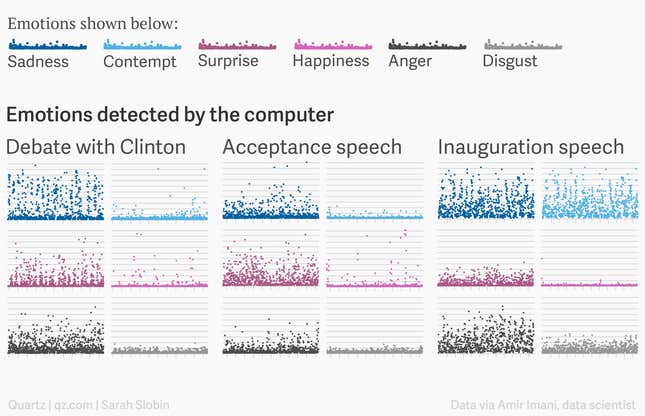Some people watched the inaugural speech of US president Donald Trump and saw darkness. Others saw hope. Is one view correct and the other just wrong? Is there a middle ground on which we all can meet? And if Facebook is a filter bubble filled with fake news, and journalists, as the president has said, are among the most dishonest people on earth, who are we to believe?
In search of an alternative, unbiased view we asked a computer.
We worked with data scientist Amir Imani who used machine learning to develop an algorithm to “watch” Trump’s two recent speeches and collect data on the emotions detected in his face. We’re not the only ones doing this kind of work; using artificial intelligence as a reporting tool was recently called “augmented writing” in a blog post by Francesco Marconi, a strategy and development manager at the Associated Press, who predicted that 2017 would become the “year of augmented writing.”
We took a similar approach last October with two of the debates between Trump and Hillary Clinton, and developed a visualization based on data generated by a computer trained to recognize faces and detect sentiment. Back then, the machine detected that Clinton was happy and Trump was angry and sad.
So what happened this time?

First of all, the computer detected a lot of surprise on Trump’s face when he was accepting the job of US president—but also a good deal of sadness. That could also be a sort of “happy-sadness,” given Trump spent a lot of time thanking the people who were part of his campaign.
As to the inauguration, his angriest moment looks like this:

This is what he was saying at the time:
We will seek friendship and goodwill with the nations of the world, but we do so with the understanding that it is the right of all nations to put their own interests first. We do not seek to impose our way of life on anyone, but rather to let it shine as an example. We will shine for everyone to follow.
The computer may be missing some nuance here. So let’s look at all the data we have at this point: the first debate with Hillary Clinton, which lasted roughly an hour, and his first two speeches, which lasted about 15 minutes each.

With nearly two hours of data on Trump it’s clear the computer detects much more contempt in his inauguration speech than in the other events.
We know that the computer isn’t lying and we know that its response to the speeches isn’t fake. Is it the truth? That depends on your view of data. And science. And machine learning. And your filter bubble.





